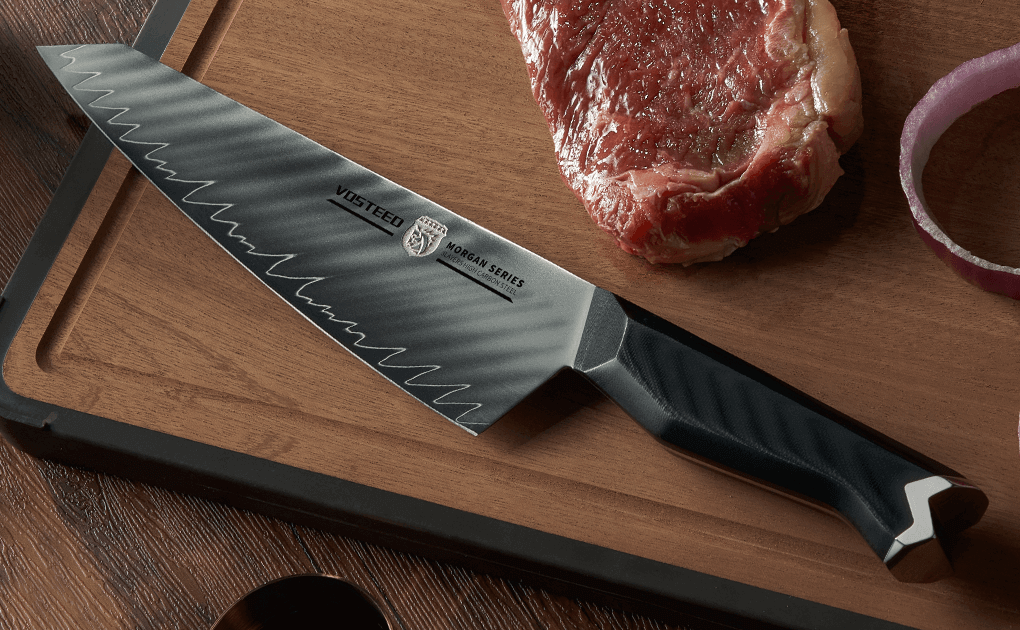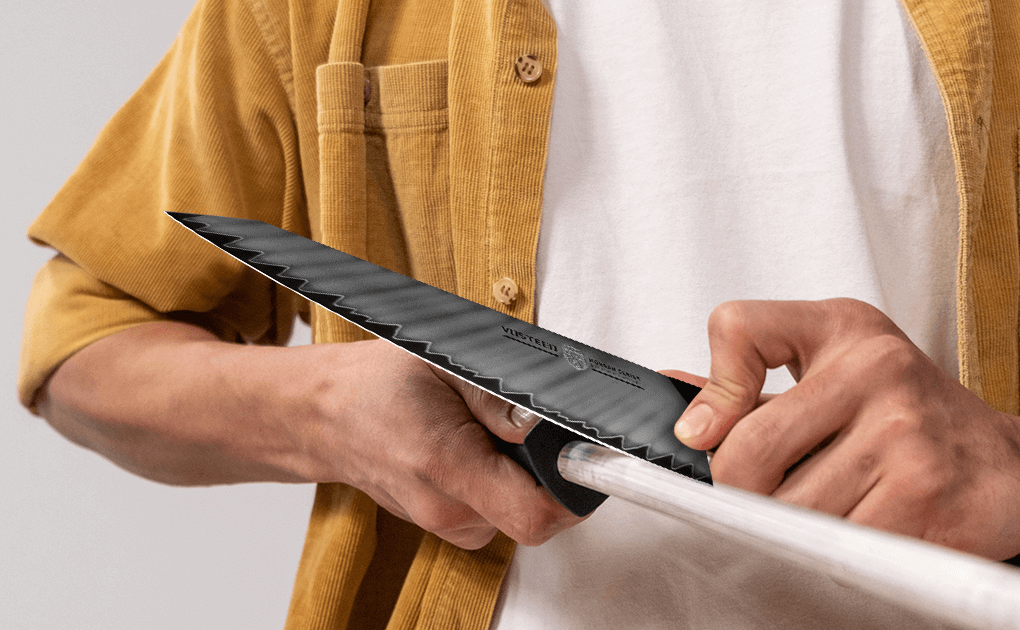This is the first and maybe the most important question for any new home cook.
According to Alice Henneman, MS, RDN, Extension Educator at UNL *1, a chef's knife (aka, French knife) can be defined as a knife that is broad, has a tapered shape, and a fine sharp edge.
Chef knives come in different lengths (6 to 12 inches cutting length) and different widths (1-2 inches at the widest point).
Unlike kitchen knives that are used in other parts of the world, the Western chef knives are often designed with a slightly curved belly and a small straight cutting section close to the handle. Chefs and home cooks can both rock the knife as well as have downward cut action when cutting food.
What are Chef’s knives used for?
As the old saying goes, chef’s knives are the best friend of chefs, chef’s knives are the fundamental tools in the kitchen. They are versatile multi-purpose tools that can be used for various tasks such as cutting a large chunk of softer ingredients such as fish, shrimp, and meat (no hard bones), mincing things like nuts and garlic, chopping vegetables and herbs, as well as julienning potatoes and carrots, etc.
In some settings, chef’s knives can also be used as ad-hoc cutting tools for are tasks such as cutting turkey or ham, as well as dicing big root vegetables such as onion and etc.
Which size chef knife is best?
This is another question that is often being asked. Usually, there are three main sizes for chef’s knives, 6-inch, 8-inch, and 10-inch.
With the increase of blade length, the weight of the knife is also increased. In addition, to safely use larger chef’s knives, a larger kitchen countertop is preferred. Thus, for daily home use, the 8-inch ones are the most popular size.
Another thing that needs to be considered when choosing the right size of the chef’s knife is related to the user ergonomics. People with small statues (under 5’4”) may find it difficult to have good control over 10-inch or 12-inch chef’s knives. In that case, a 6-inch chef’s knife gives the users more control, and the smaller size requires less storage space.
In general, the length (from the heel to the tip) of the chef’s knife should not exceed the length of the user’s forearm (a.k.a. the forearm rule). This easy method provides a quick and good estimation of the maneuverability of the knife when you are using the knife.
What chef knife is the best?
This is another frequently asked question, and there is no single answer to it.
There are some perspectives that can help you make the right choice:
- What is your budget range?
- What is the length of the knife?
- What is the steel and heat treatment of the knife?
- How about the ergonomics of the knife?
- What’s the warranty policy of the manufacturer?
Using the Vosteed Morgan chef knife as an example.
Our 8-inch Morgan chef's knife uses mid-to-high-end 9cr18MoV steel and was heat-treated to a 60 HRC hardness. This combo allows the Morgan to take a very sharp edge and retain it for a long time. The Morgan chef’s knife also has extremely good chipping and rust resistance for easy cleaning and maintenance.

The Morgan chef knife is balanced right at the pinch point, therefore whenever you pick up the knife, you will have intuitive control over the knife. In addition, by sculpting a contoured curve at the handle belly, your middle, ring, and small finger will have natural and secured control over the knife.

With our 120-day full money-back guarantee policy, our 8-inch Morgan chef knife is one of the best chef knives in the sub $100 group, and we sincerely believe you will love the feeling of using it.




Leave a comment
All comments are moderated before being published.
This site is protected by hCaptcha and the hCaptcha Privacy Policy and Terms of Service apply.